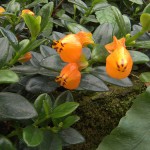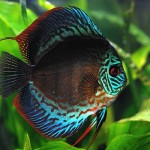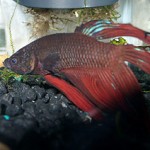Freshwater aquarium plants are an important part of the overall strategy in ensuring your aquarium has a satisfactory environment in which to keep and maintain your fish in a healthy state. This report covers two types of plants you can use and their requirements.
It is a mistake to regard plants as nothing to be concerned about. Plants play an important role in aquariums as they not only help to provide a safe and attractive environment for the fish they also help to maintain and improve water conditions in the aquarium by reducing nitrate levels.
Do not treat the selection of plants as a trivial task. It is not. By reducing levels of nitrate in the aquarium, providing a haven for timid and shy fish, helping reduce algae growth and during breeding supplying areas for spawning, plants have great beneficial effect on both the aquarium environment and the fish themselves.
When buying plants make sure they are really proper aquatic plants and check the leaves for discoloration. There are generally 4 sorts of freshwater aquarium plants you could put in your tank cuttings, rooted plants, floating plants and tubers. Here we cover the rooted plants and the cuttings.
Rooted Plants
Rooted plants you purchase are often seen encased in mesh baskets. You can plant them in your tank as they are but in time the baskets may become visible so you may wish to plant with the baskets removed. In some cases plants are in a synthetic media which may cause irritation to your fish so it is best removed.
In other cases you may find more than one specimen in your pot, so separate them all before planting in the substrate. You can feed your plants every quarter if necessary with aquarium fertilizer and if you want to restrict their growth you can cut some of the roots at the base.
Plants like the Dwarf Anubias (Anubias nana) and Java Fern (Microsorium pteropus) are good for giving height to your planting layout. They have rhizomes (horizontal stems) sprouting small roots that will attach themselves onto wood or rocks. And of course, fish that dig around in the substrate will not affect these plants.
The Dwarf Anubia can be fixed to wood or rocks by nylon line initially until established but be careful not to cut through the rhizome. Lighting should be somewhat subdued. The Java Fern grows slowly and is sturdy, requiring moderate lighting.
Cuttings
Cuttings are the tops of plants (no roots) and are useful for both the foreground in your tank or the background, though you will need to trim the foreground plants regularly. You need to place the cuttings so that light can get through to the very bottom leaves, otherwise they will die, rot and pollute the tank.
Locate the cuttings in such a way that when viewed from in front of the tank all you see is a wall of plants. Never plant in bunches as this can cause stem rot due to bruising, especially with vulnerable species. A lot of plants can grow both in and out of water and are easier to cultivate.
The Green Cabomba (Cabomba caroliniana) has fine feathery leaves and it is better to have soft water and bright light. But it may be a bit difficult to grow. The Giant Hygrophila (Nomaphila stricta) has large broad leaves, is useful as sites for spawning and for providing a safe haven. They do better with water that is slightly hard and with a good strong light.

















Leave a Reply